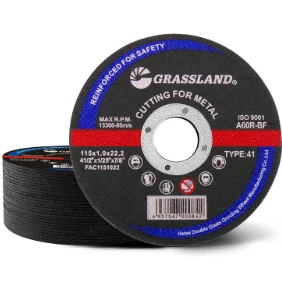

For novices, investing time in learning proper maintenance techniques extends the life of flap discs. Keeping discs free from embedded debris through regular cleaning is crucial. It is advisable to utilize compressed air or a soft brush for this purpose. Furthermore, storing the discs in a dry, stable environment prevents warping and degradation, thereby ensuring their readiness for use at any time. An often overlooked aspect of flap disc polishing is the ergonomic design of the tools used alongside them. Ergonomic angle grinders, with vibration dampening features, significantly reduce operator fatigue and enhance precision control. Combined with high-quality flap discs, these tools allow for extended working hours without compromising on quality and accuracy, marking a significant consideration for professionals engaged in prolonged projects. The technological advancements in the development of flap discs have also shed light on innovative abrasive material options. Traditionally made with aluminum oxide, flap discs now also incorporate zirconia alumina and ceramic alumina materials. These newer abrasives deliver superior performance by cutting faster and lasting longer, especially critical when working with hard metals. In conclusion, flap disc polishing exemplifies a synthesis of technique, tool selection, and innovation. Its pivotal role in material finishing tasks across multiple industries cannot be overstated. With an understanding of the nuances in flap disc selection and usage, manufacturers, craftsmen, and hobbyists alike can achieve exceptional quality, efficiency, and reliability in their finished products, thereby elevating their craftsmanship to meet the highest industry standards.
Post time:Feb - 16 - 2025

















